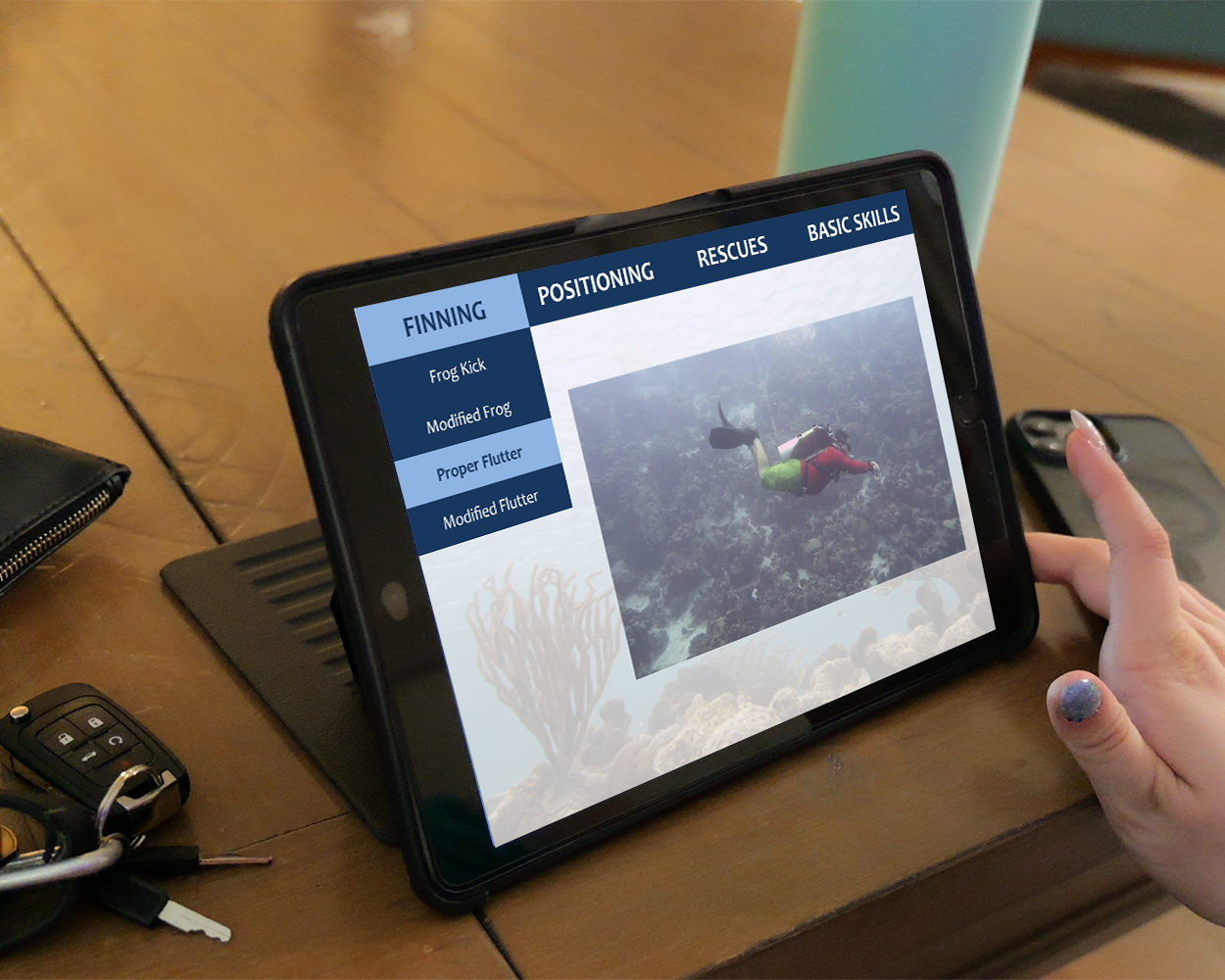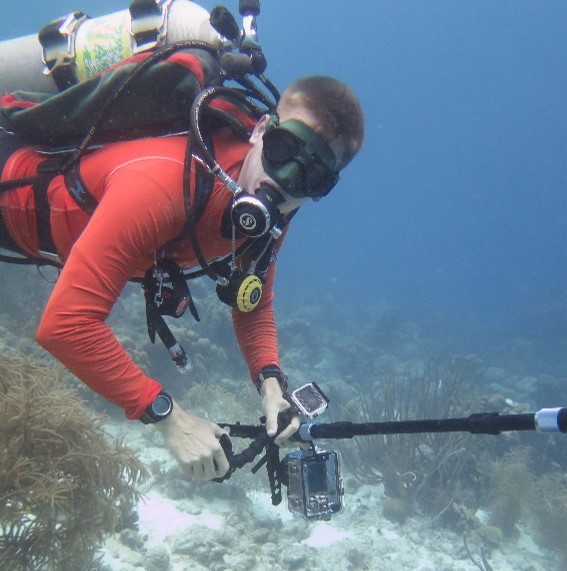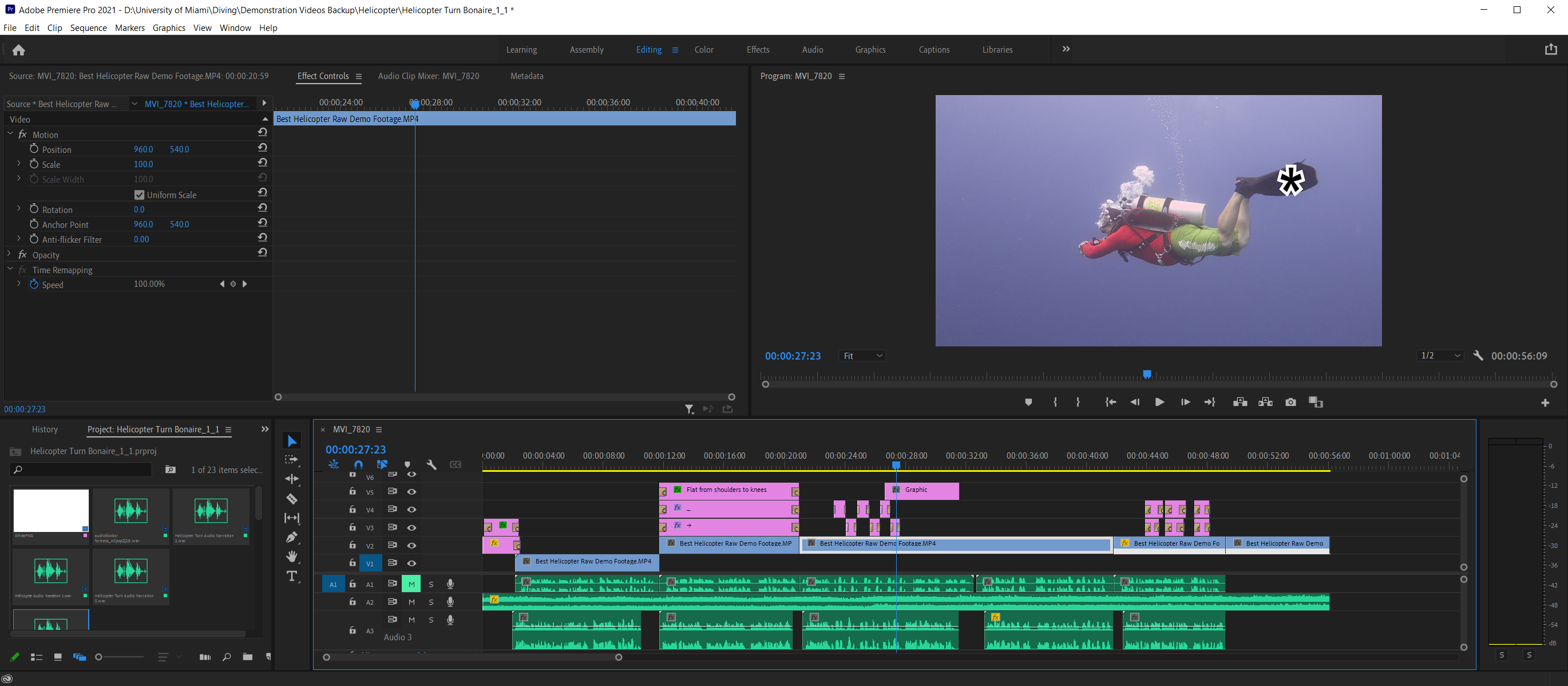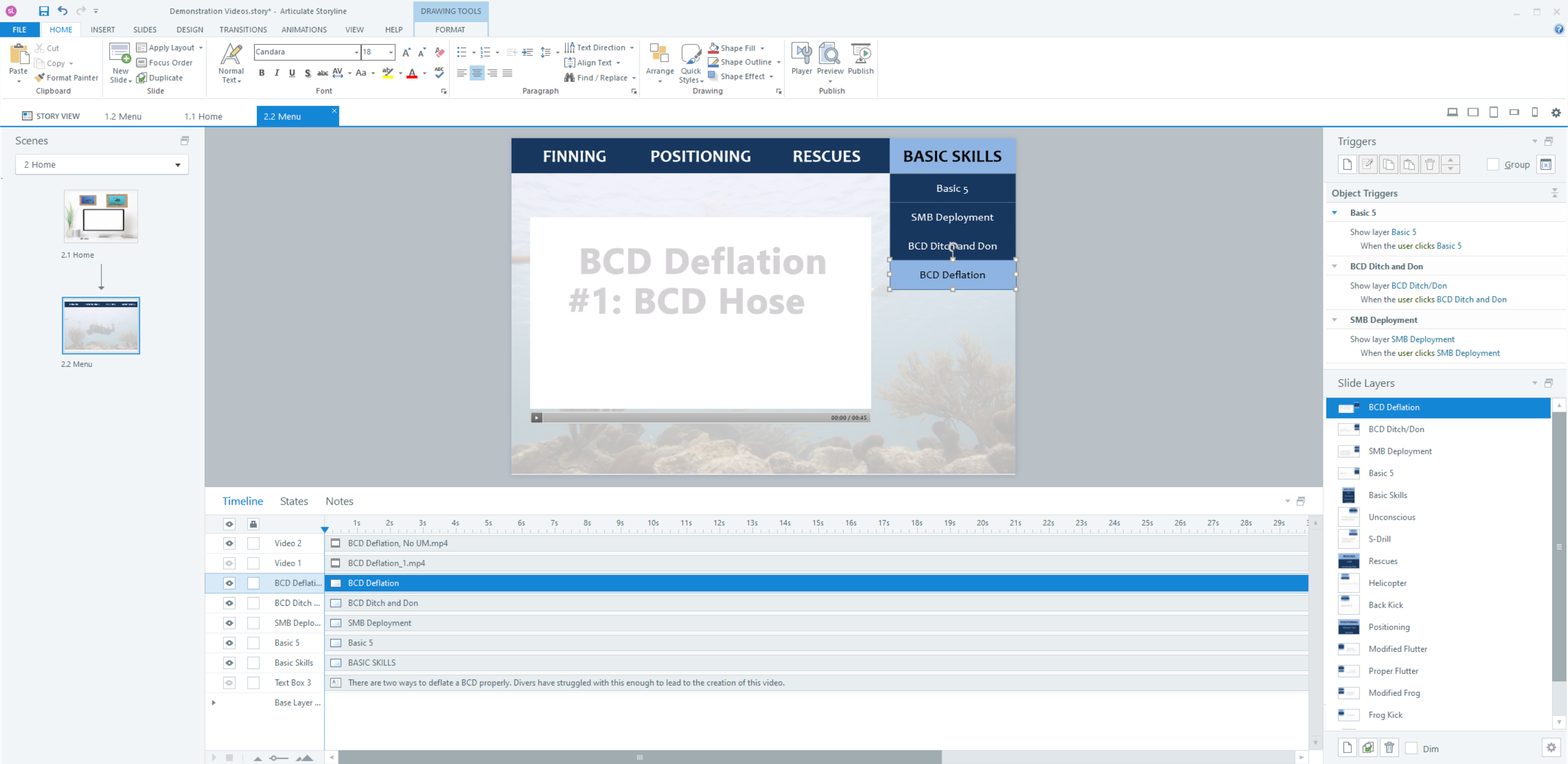Demonstration Video Resource
 See the Video Resource
See the Video ResourceUniversity scuba diving students studying Marine Science
Foundational skills are critical for diving scientists to master in order to excel in their studies and land competitive jobs. Scientific diving students were routinely falling short of the high skill performance benchmark set by the program and they regularly voiced grievances of not having enough in-water time to practice their skills to reach the desired outcome.
I proposed to produce demonstration videos of skills that would be evaluated for a grade. It involved planning the shots, evaluating conditions and lighting, doing all filming underwater (except the S-Drill in which I am in the video), writing the script, recording the narration, then editing it all and packaging it in an accessible format.
The first step was to identify the most important videos and then plan the filming. Based on the project’s budget, timeline, and post-course assessments of additional video needs, videos were shot at different times in different settings. After the first set of videos proved beneficial (backed up by data analysis I conducted), another set was filmed. When more data analysis proved that it was successful, more videos were made.

The most demanding part of the project was the filming. Schedules had to align, weather had to cooperate, and visibility needed to be clear. When all these things fell into place, I was able to conduct the filming.
Everything was conducted underwater and all communication was done using hand signals and body language. I communicated which angles worked best, the position I wanted with respect to the environment, where and when to do the skills, feedback on what worked and what didn’t, and how many takes to film until I got the shot I wanted. A couple videos relied on two different cameras set to simultaneously record.
As an additional note, I was not touching the ground for any of the videos, so I was hovering neutrally buoyant mid-water in a flat position while filming every shot.
Once the videos were filmed, I used my own expertise on the subject to write the script. My boss (seen in all videos) and I co-taught the course and so we both knew what to look for and what needed to be highlighted in the videos. I asked for his input after the scripts were written, and when some minor changes here and there were suggested, I took them to heart and made the appropriate modifications to the script.
I used professional recording equipment to record the scripts into Adobe Audition. I was able to edit the audio and space it out appropriately for the shots.

Importing all video and audio files into Adobe Premiere Pro, I began putting everything together. I added text, effects, background music, and synced the audio with the video. For a couple of the videos, I found it helpful to further highlight some facets of the skills and therefore I used After Effects to add additional visuals so that students would better understand the skills.
After each video was made, it was submitted for feedback. Once they were all approved, I set out with Storyline to turn the videos into one centralized module.

After the videos were approved, I set out to create a visually pleasing logical layout in Articulate Storyline. There were a couple generations of the module, but the latest version used simple clean tabs that allowed easy access to all four categories of skills. I set the color scheme, created appropriate button states, and used layers to create the course.
Relying on constant assessment of student skill performance scores, I made adjustments to the course on a regular basis to ensure that each iteration of this course helped improve student performance in a measurable way.